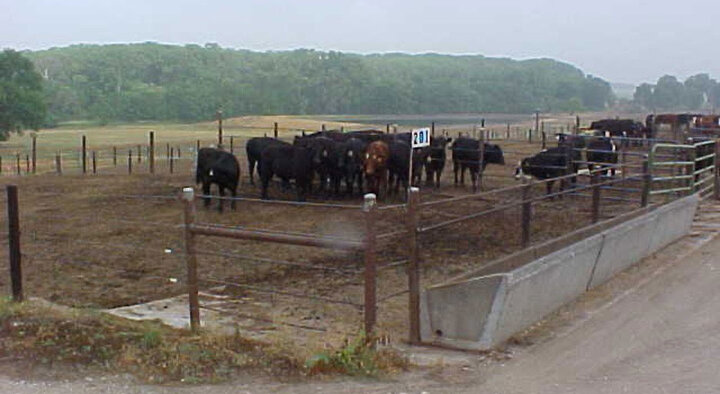Various factors affect water intake; but temperature, humidity and feed intake are the main drivers. Additionally, the first heat events of the season (late May and early June) are the most stressful on cattle: cattle are generally reaching finishing weight and condition, they are not acclimated to heat, and they have not shed their winter coat. This transition also catches managers and staff off guard as they are focused on late-winter yard management.
A quick reference to keep in mind as heat and humidity approach heat stress levels is the requirement of 1 gallon of water per pound of dry matter consumed. When weather transitions from cool nights and warm days to warm nights and hot days, cattle consuming 25 to 30 lb of dry matter will need to have access to 25 to 30 gallons of water daily. Later in the summer, intake moderation brought on by continued heat exposure might reduce this need to between 20 and 25 gallons.
It is also important to keep in mind that cattle under heat stress do not have 24 hours to consume their daily water requirement. Because of the intensity of heat stress, feedlot managers should plan on delivering the daily water requirement to all cattle in a pen within 4 to 6 hours. This means that for every 100 head, pipes delivering water to pen water troughs should reach minimum water flows of 8 to 10 gallons per minute. Older systems may never have had this water flow capacity, or the capacity may have declined over time.
Ensuring that 100% of the cattle in the pen reach a spot at the water trough within a 4- to 6-hour window is the next level of concern. Water trough size and, in some cases, distribution should be considered.
At an expected water drinking rate of 1.1 to 3.7 gallons per minute, each animal must spend from 7 to 22 minutes daily at the trough to satisfy their water requirement. This means that, providing one-time linear access of 48 inches/head to 10 cattle (40 linear feet) out of a 100-head pen, any individual spot at a drinking trough will be occupied for from 68 to 220 minutes to satisfy water requirements. This time allotment does not consider inherent behavioral expressions such as loafing at the trough, lapping up water, agonistic or playful behaviors disrupting access to the trough.
Final considerations for meeting water needs of the feedlot involve focusing on troubleshooting "problem" pens: pens where water access or heat stress abatement is a problem. Adding extra water tanks to increase water access will reduce heat loads caused by crowded water tanks, poor air movement, or lack of shade.

